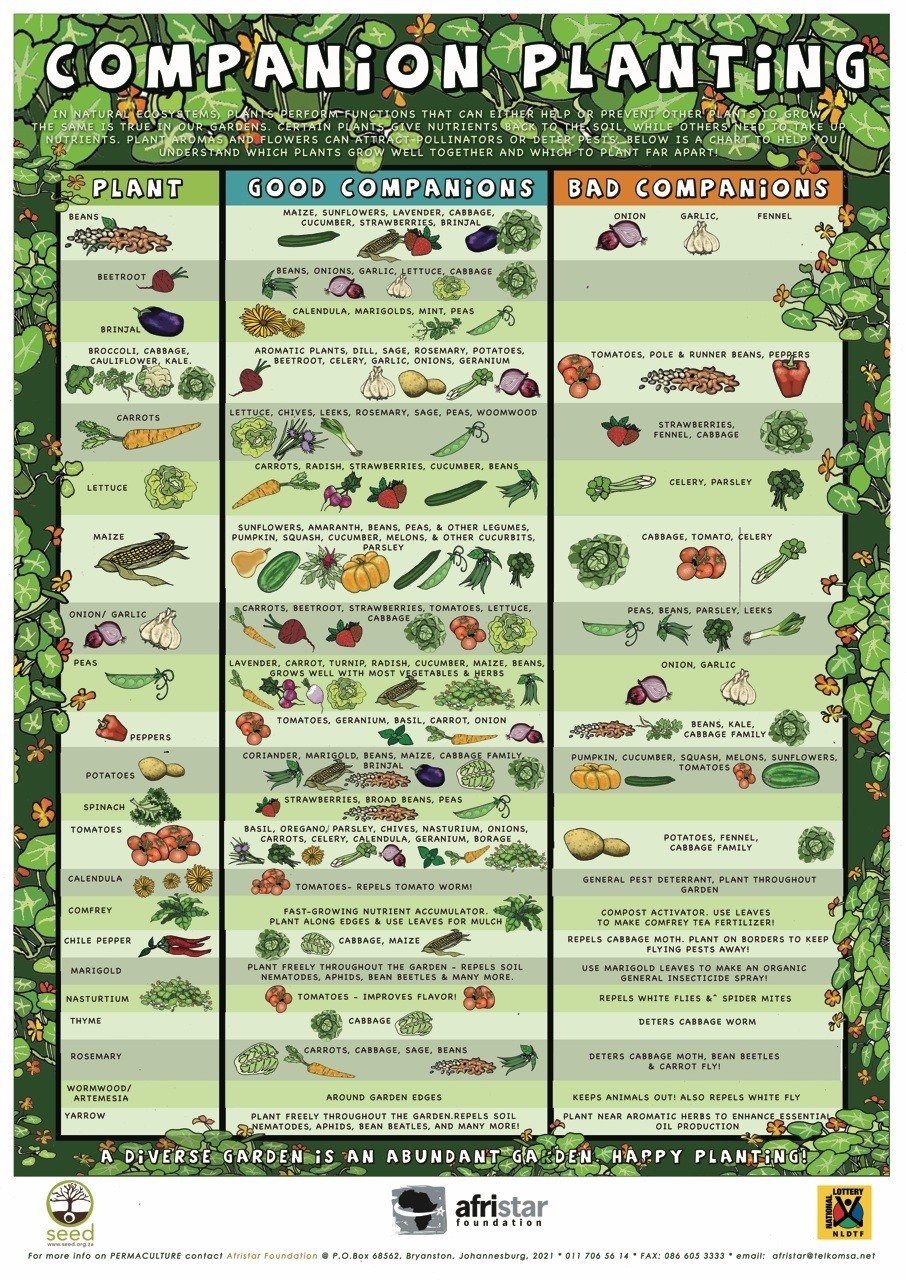Though it’s only the beginning of March, many people are starting to sense the first kiss of spring in the air. Snow is melting, birds are returning from their warmer winter abodes, and avid gardeners will soon begin to start seeds for this year’s garden.
One of the best ways to ensure the health and vitality of your vegetables and herbs is to surround them with plants that are complementary to them; a technique known as companion planting. The idea behind this is that every plant out there needs vital nutrients, and also expels nutrients that are beneficial to other organisms. When you plant herbs and veggies in nice, neat little rows, they have much less chance of thriving than if you pack them in with friends who can boost their health and provide help in the growing process.
The Three Sisters
A perfect example of companion planting is the “three sisters” combination of corn, pole beans, and squash:
- Corn grows quite tall, which provides the pole beans with a climbing trellis
- The beans help secure the corn, since corn’s roots are quite shallow
- Squash’s leaves provide a living mulch to the beans and corn, ensuring that they retain moisture
- Beans deposit nitrogen into the soil, which corn and squash both require
- Squash’s prickly leaves deter animals from stealing the beans and corn
Sounds rather cool, doesn’t it? If only human siblings got along that well…
In any case, there are many plants that establish this kind of symbiotic relationship, and encouraging it in your own garden can yield spectacular results. Your veggies will be healthier and more flavourful, you’ll find fewer pests ravaging the garden, and it’s lovely to see all the different colours and textures of these plants juxtaposed against one another instead of just standing stodgily in long, straight lines.
The Basics
Once you have a basic idea of what you’d like to sow in your garden, it’s important to do your research regarding which plants are beneficial for the ones you’ve chosen. While some veggies and herbs grow really well together, others can be downright nasty to one another. Keep a solid companion planting chart nearby as you plan so you can map out where to plant what, ensuring that every seedling plays well with its neighbours.
Here is a short list of some of the most commonly-planted items, and what their beneficial and detrimental companions are:
Basil: An excellent herb to grow with tomatoes, it’ll fend off tomato worms, and will enhance growth. Don’t grow it anywhere near cabbage or snap beans, however—it’ll lower their yield and stunt growth. It doesn’t play nicely with sage either.
Dill: Great with cauliflower, broccoli, and other brassicas (like Brussels sprouts), but keep it away from fennel (it’ll cross-pollinate with it), and carrots.
Chives: Beneficial for tomatoes, carrots, and even roses.
Bush beans: These get along with most plants, but they don’t get on well with anything in the onion family (onions, chives, garlic), or beets.
Celery: Grows well with tomatoes, beans, and cabbage, but you can’t grow it near any melons, cucumbers, or gourds.
Rosemary: Excellent for cabbage, beans, and carrots, but don’t plant it anywhere near basil—the rosemary will die.
Zucchini: Plays nicely with tomatoes, squash, beets, lettuces, and anything in the mint family, but keep it away from potatoes—they’ll rot one another.
Sage: Good for any brassicas, as well as cucumbers and beans, but can’t be placed near onions.
This is obviously just a very small list of plants: I have over 80 vegetable varieties in my garden, interspersed with 30-odd types of herbs, so you can imagine how many options there are for potential gardeners. Decide which veggies and herbs you like best, determine whether they’ll grow in your zone, and then consult those charts to sort out which to plant where.
Keep a Record
It’s important to keep notes so you can track the success of your various plants. These notes are also vital when it comes to planning out the following year’s garden: crops should always be rotated in order to maximize their nutrient absorption (and thus, their health), and just as some plants can’t be placed near their “foes”, they can’t be placed in the same soil where those particular plants grew the preceding year. Unless you have an infallible photographic memory and will remember where you planted everything, take notes and pictures.
Reference Books
If you’re interested in learning more about companion planting, home-scale food production, or about permaculture gardening, consider checking out some of the books listed below. Many of them should be available at your local library, or you can buy them online as permanent reference materials.
- Gaia’s Garden, by Toby Hemenway
- Carrots Love Tomatoes: Secrets of Companion Planting for Successful Gardening, by Louise Riotte
- Food, Not Lawns, by H.C. Flores
- Perennial Vegetables: From Artichokes to Zuiki Taro, a Gardener’s Guide to Over 100 Delicious and Easy to Grow Edibles, by Eric Toensmeier
- How to Grow More Vegetables: And Fruits, Nuts, Berries, Grains, and Other Crops Than You Ever Thought Possible on Less Land Than You Can Imagine, by John Jeavons
- Great Garden Companions, by Sally Cunningham
Reference Infographic
Infographic Source: afristarfoundation













































